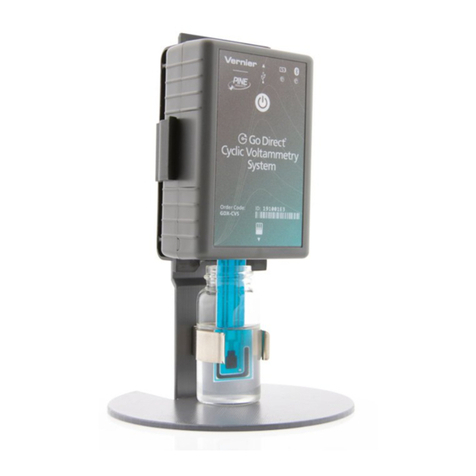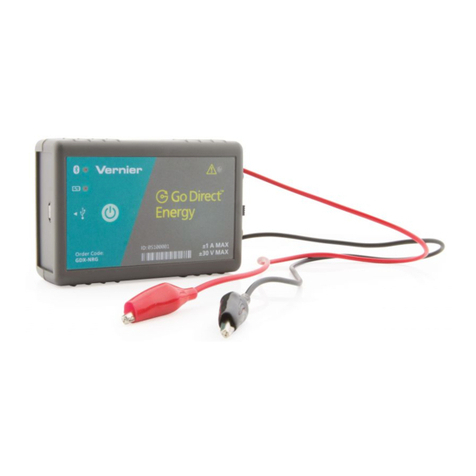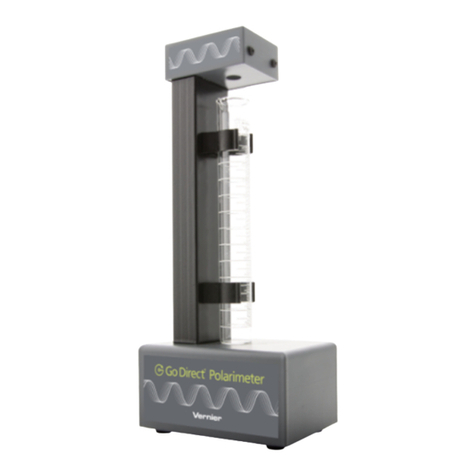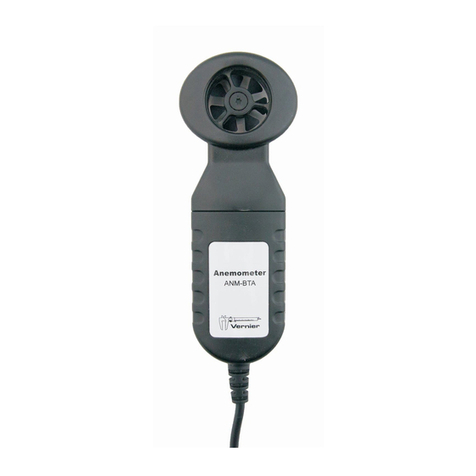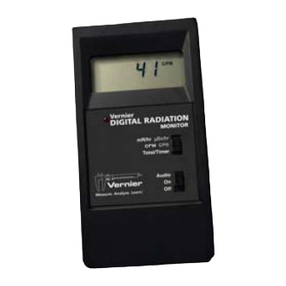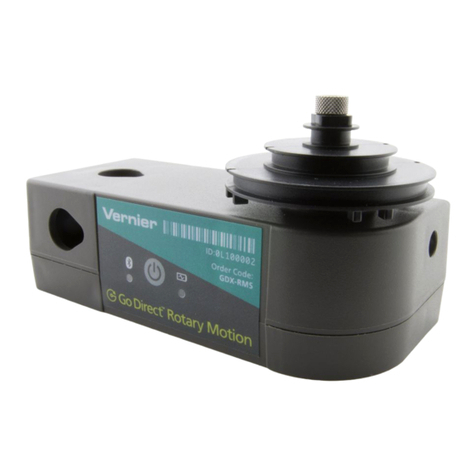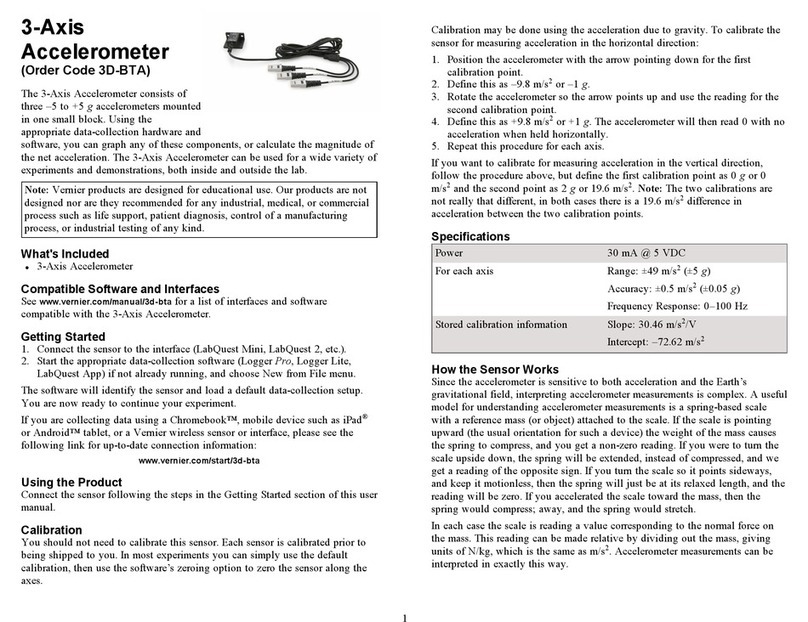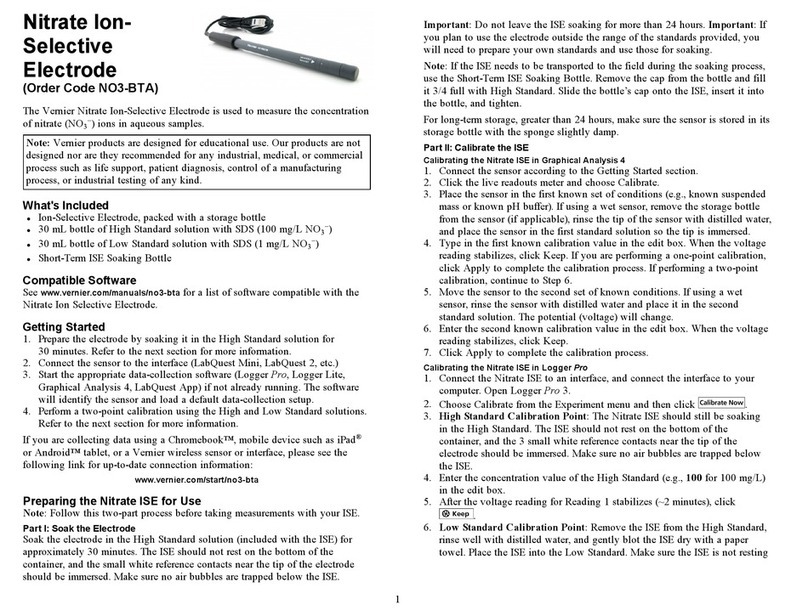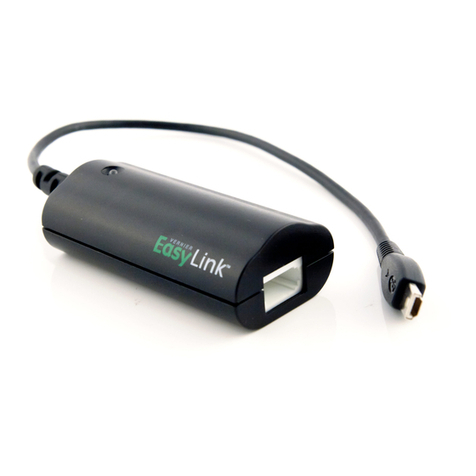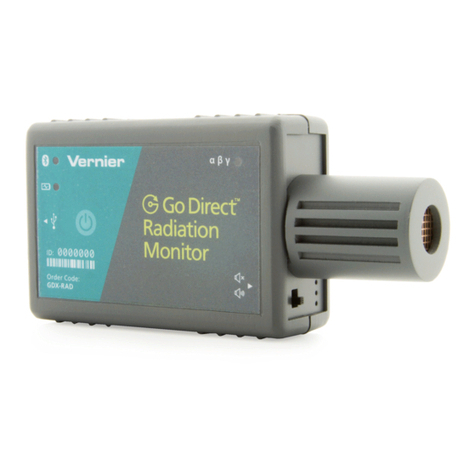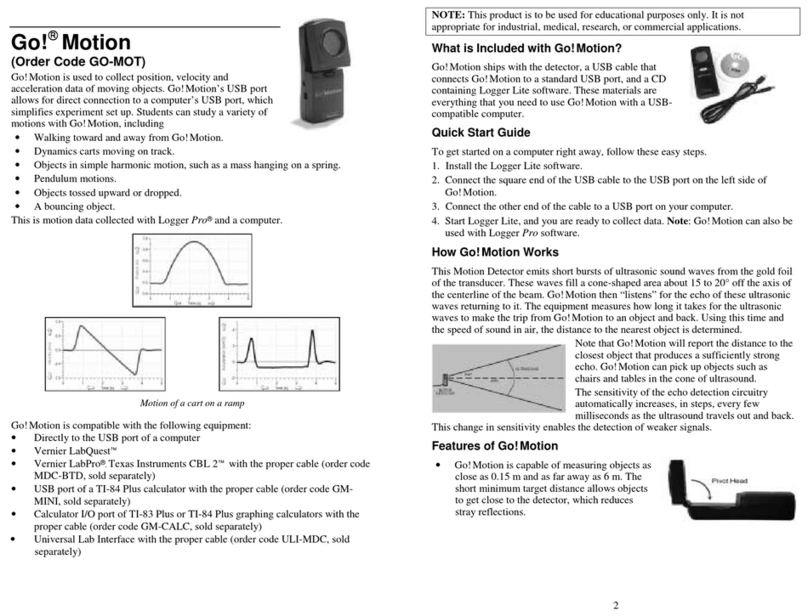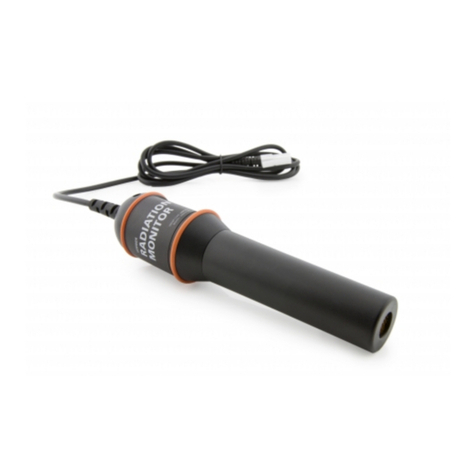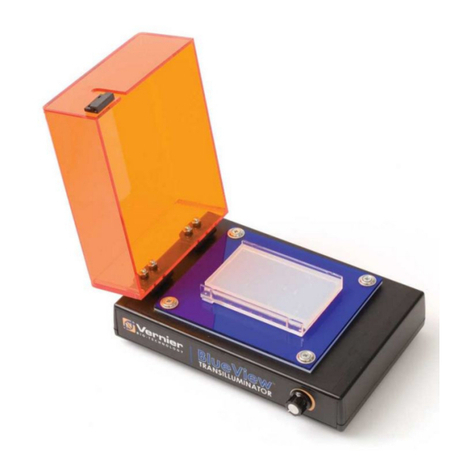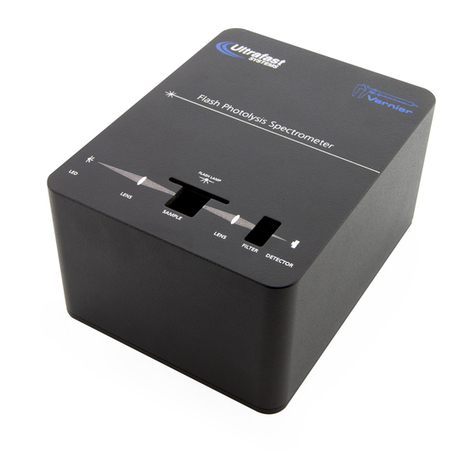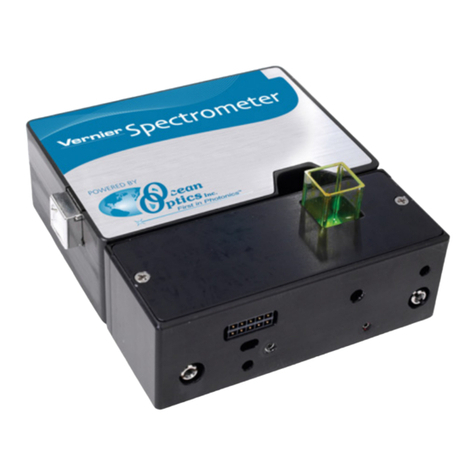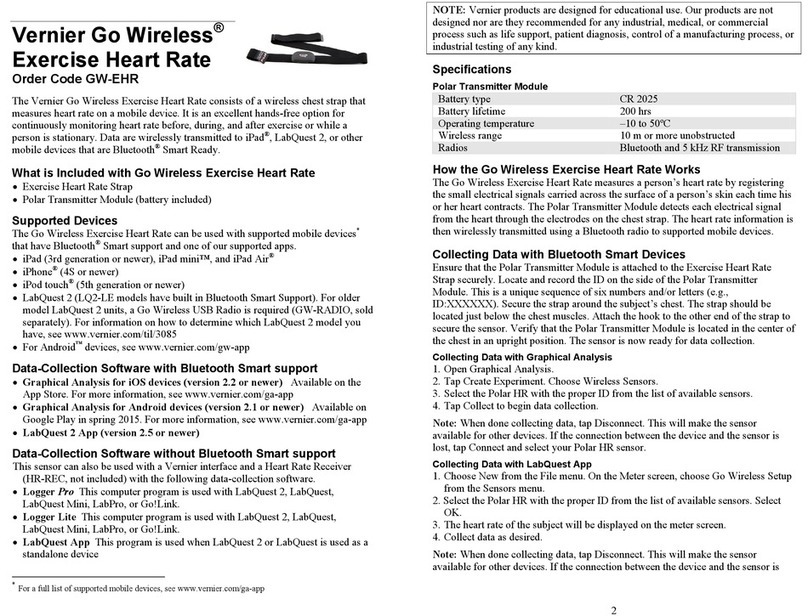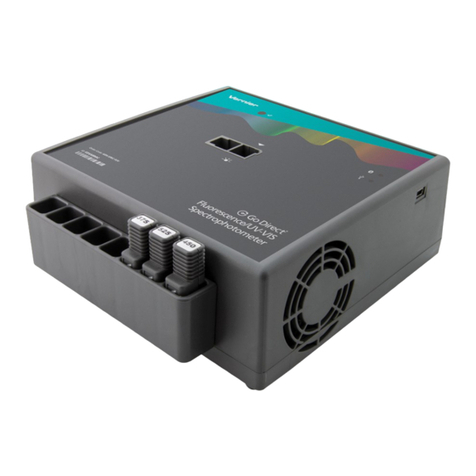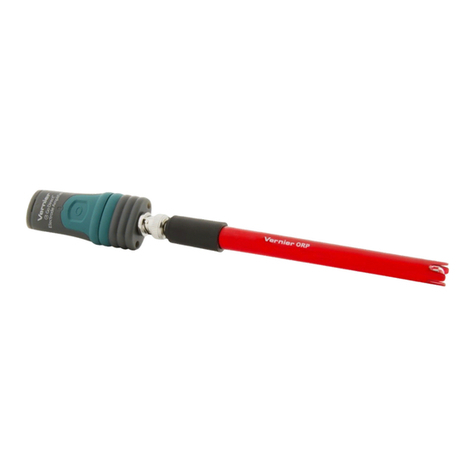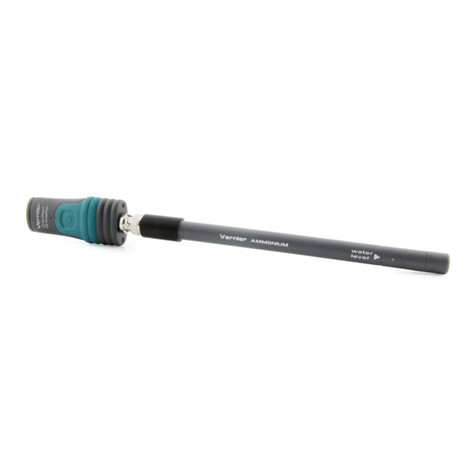5
How the Sound Level Meter Works
The Sound Level Meter uses an electric condenser microphone mounted on the end of
a shaft. The output of this microphone is fed into a series of filters, amplifiers,
integrators, and adder circuits to produce a single sound pressure level measurement.
The Sound Level Meter uses a directional microphone, which requires the instrument
be pointed in the direction of the noise source unless ambient noise levels are being
monitored.
Acoustical engineers organize the audio spectrum into sound octave bands.3The
weighting switch on your Sound Level Meter is used to add or subtract different
values to the octave band components. The “A” weighted sound level discriminates
against low frequencies, in a manner similar to the response of the ear. In this setting
the meter primarily measures in the 500 to 10,000 Hz range. It is the weighting scale
most commonly used for OSHA and DEQ regulatory measurements. The “C”
weighted sound level does not discriminate against low frequencies and measures
uniformly over the frequency range of 30 to 10,000 Hz. This weighting scale is
useful for monitoring sources such as engines, explosions and machinery. The sound
levels measured with these two weightings have units of “dBA” and “dBC”,
respectively.
Calibration Information
You should not need to calibrate the Sound Level Meter for classroom use.
Calibration is possible, but it will require access to a special calibrator, not
commonly available in the classroom.
This sensor is equipped with circuitry that supports auto-ID. When used with
LabQuest 2, LabQuest, LabQuest Mini, LabPro, Go! Link, SensorDAQ, TI-Nspire™
Lab Cradle, EasyLink, or CBL 2™, the data-collection software identifies the sensor
and uses pre-defined parameters to configure an experiment appropriate to the
recognized sensor.
Suggested Experiments
Sound Level Studies
You can collect sound level data in many real-world situations; for example, you can
collect sound levels before, during and after a concert or dance.
collect sound levels throughout the day in a school hallway or shopping mall.
use the Sound Level Meter to judge cheering contests at pep rallies.
collect data outside and inside a car equipped with a stereo system.
make a model of an ear and ear canal. Measure sound levels at the “ear drum”
when a headset is placed over the ear. Repeat the experiment but place an earplug
between the headset and the meter.
Set up the Sound Level Meter to collect readings in a variety of situations. Use
the following chart to determine the acceptable duration for exposure to the
sound level you measure.
3A table of the frequency bands for each octave band appears in the Additional References
section of this manual.
6
The following chart4shows the sound level exposure rates set by the OSHA
Occupational Noise Exposure Standard. In a work environment, for example, it is
acceptable to be exposed to 90 dB for eight hours as measured on the “A” weighted
scale. If the sound level is 100 dB, the acceptable duration is two hours.
Duration per day
(hrs)
Sound level, slow-response
(dBA)
8.0 90
6.0 92
4.0 95
2.0 100
1.0 105
0.5 110
0.25 115
Environmental Measurements
Environmental measurements can be made anywhere people spend significant
amounts of time, such as their residence. The DEQ noise standard uses statistical
sound level values that are applied to residential measurements. One of these
measurements is the equivalent hourly sound level, Leq. You can collect sound level
data with the Sound Level Meter set on “A” weighting and slow response. If you
collect data for an hour and determine the average, you will have an estimate of Leq.
These values can then be compared to the local DEQ standards.
Room Acoustics
One goal of acoustic engineers is to “tune” a room for a specific purpose. A room
tuned for lecture will be tuned differently than a library. The Sound Level Meter can
be used to investigate acoustics in a room. One of the indicators of good room
acoustics is the length of time sound stays in the room. Hard surface in a room allow
sound to “reverberate” for relatively long periods of time. Soft surfaces dampen the
reverberation. For example, if you clap your hands in an empty gymnasium, you will
hear a relatively long echo. Repeat the experiment in a library, music room, or
concert hall, and you will hear a shorter echo. Use the Sound Level Meter and a
computer or calculator to try this experiment:
1. Set the equipment up to collect data for 5 seconds.
2. Use the triggering feature of the software so the data collection is initiated with a
loud sound.
3. Collect a set of data and examine the graph.
4Paragraphs 29 CFR 1910.95, Table G-16 of the OSHA Occupational Noise Exposure
Standard.
